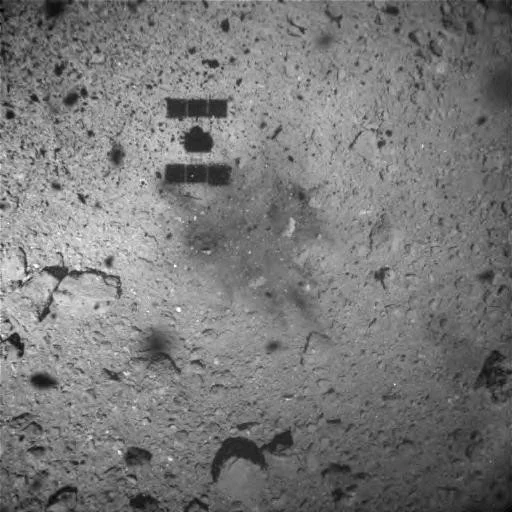Topics/Asteroids
China dominates. Asteroid mining dies but attends its own funeral. Reusable rockets lower the cost and increase access to space. The Moon, Mars, and asteroids all get new survey maps for water resources. Water-based thrusters perform well in orbit. Asteroids are blasted and samples collected. Space mining gets more legal scaffolding. The Moon gets one new rover and two new craters.
The first asteroid mining missions may not happen for a decade or more, but government agencies and private companies are steadily working towards making it a reality. As some groups work the engineering and business challenges, others are looking at the scientific and legal challenges. One such challenge is dealing with debris in a microgravity environment.
As of today, 13 November 2019, JAXA’s Hayabusa2 spacecraft is on a year-long journey back to Earth after nearly 17 months exploring the asteroid Ryugu. JAXA has flawlessly executed the mission so far, building upon lessons learned from the first Hayabusa mission. After one of the fastest atmospheric entries ever, the samples will provide invaluable insight into pristine asteroid regolith.
TransAstra was one of two groups awarded the first ever NASA Innovative Advanced Concepts (NIAC) Phase III grant. TransAstra will use the Phase III funds to advanced its first flight demonstration mission of the Mini Bee asteroid mining concept. The Mini Bee spacecraft will be about 250 kg in size, and will test the optical mining concept in a space environment using a synthetic asteroid launched from Earth. The CI-type asteroid simulant will be made by the Florida-based company Exolith Labs using leftover materials from Deep Space Industries before they shut down. Expected to launch in the early 2020s, this will be the first time water is extracted from material similar to asteroids while in space.
A science team led by Alessondra Springmann found that heating up various types of carbonaceous chondrite meteorites released water as well as other volatile and toxic trace elements. Water is likely one of the very first resources that will be sourced from space for use in space. It is versatile for a variety of applications, including rocket propellant, consumption by astronauts, and bulk radiation shielding.
Water has been directly observed from two samples returned from the S-type asteroid Itokawa. It was hypothesized that S-type asteroids contained low concentration water bearing minerals due to light curve data and studying similar minerals on Earth. However, the two Itokawa samples contained high concentrations of water at 698 and 988 parts per million weight, respectively. This holds great promise for asteroid processing targets if similar S-type asteroids have similar water concentrations.
After less than three months in orbit, the NASA OSIRIS-REx mission has already made several discoveries about the Near Earth Asteroid (NEA) Bennu. Most promising for resource utilization is the presence of water-bearing (hydrated) materials. However, the environment is dangerous with particle ejections from unknown sources, many large boulders, and an ever accelerating rotation rate. Asteroid exploration and processing missions are in for a challenge!
A key appeal for processing water from asteroids as opposed to the Moon is the low delta-V required to get to and from them. However, this assumes that water rich asteroids come near Earth. Scientists from the Planetary Science Institute have recently developed an analytical model that can help estimate if some near-Earth objects (NEOs) contain water ice.
The quiet, everlasting vacuum has been a steady companion. After millions of years, a new visitor emerged from the darkness. Normally visitors come barreling in and cause a significant disturbance. Unusually, this visitor remained in a cautious orbit for a few months. Out of nowhere, this new companion approached with a strange appendage and fired a metal slug into the surface. Materials ejected were collected in a surgical fashion before the visitor retreated back to a safe distance. Quietness once again enveloped the scene.









ESA and their partners are pushing CubeSats further than they’ve ever been before. The M-ARGO (Miniaturised Asteroid Remote Geophysical Observer) mission is a 12U CubeSat that will be launched on a rideshare mission before using it’s own propulsion to visit a sub-100 meter wide asteroid. This mission will demonstrate a cost effective way to explore near-Earth asteroids (NEAs).